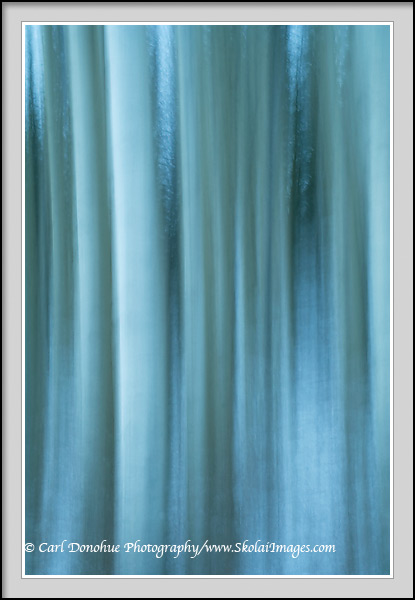Camera panning blurs the boles of Quaking aspen (Populus tremuloides) in Wrangell-St. Elias National Park and Preserve, Alaska.
Hey Folks,
Here’s a follow up to my most recent post of this small aspen stand in Wrangell-St. Elias National Park and Preserve. Aspens aren’t doing so well in the warming climate we’re seeing in the world today. It’s more than a shame, they’re such a magnificent tree. I remember the first time I ever camped beneath the canopy of a stand of aspen, not far off the Resurrection Pass Trail in Alaska’s Kenai Peninsula. A quick dinner of pasta and tuna, some cocoa and a Milky Way for dessert, and my sleeping bag called my name; just as I settled in to that beautiful state of semi-consciousness between wakefulness and sleep, those moments when all the world is your friend, a slight breeze rustled through the forest, the indescribable sound instantly hooking my complete attention. I sat up wide awake, instantly alive; “What the hell is that?”
Looking skyward, I saw the canopy of quivering leaves; ‘ahhhhh — those must be those Quaking Aspen trees I’ve heard about – what a perfectly named tree’. I settled back in to my bag, and enjoyed the comforting whisper. Quaking aspens quake because they have flattened leaf stalks, or petioles; these stalks catch the breeze and and twist and bend in the breeze. The theory behind this is that this by turning oblique angles to the sun, the higher leaves avoid harmful UV rays, and also allow more sunlight through to reach lower level leaves, enhancing photosynthesis rates. Maybe. I know it sounds pretty darn cool.
There’s just a hint of snow on the ground in this shot, which helped smooth out the background.
Cheers
Carl

I love this kind of stuff, Carl. I like this one even more than the first. The cool tones and lines are perfect!
Hey Doug,
Thanks, man, I appreciate it.
Cheers
Carl